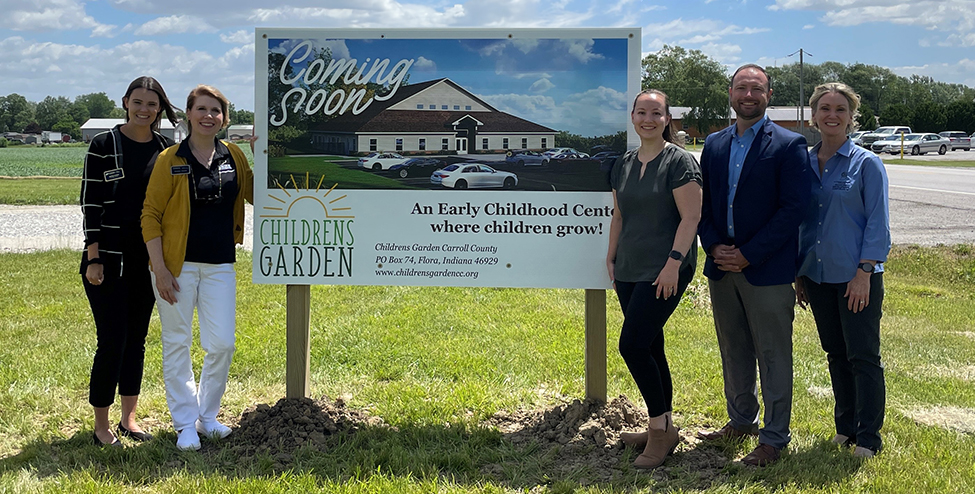Workplace Visits in Indiana During and After the Pandemic – The Trend Continues

The consequences of COVID-19 lockdowns and emphasis on remote work affected passenger travel, long haul trucks, and local fleets in the U.S. For example, the Bureau of Transportation Statistics used INRIX data to determine that on April 1, 2020 (Wednesday), a working day in the U.S., had the vehicle miles traveled (VMT) Index of 0.6 for passenger vehicles.1 This means that the total VMT was 40 percent less than the average travel in non-pandemic conditions. By April 3, 2020, the total VMT was 50 percent less compared to the average travel in normal conditions. Note that by April 2020, the majority of U.S. states had implemented emergency lockdowns with stay-at-home orders. By 2021, travel on the U.S. roads were back. A news report from Reuters mentioned that travel rose by more than 11 percent (11.2%) in December 2021 than December 2020 and both, November and December of 2021 had more travel than the pre-pandemic levels.2 As the economy opened, travel rose, and people were back in offices, remote working conditions prevailed in many organizations. The remote working trend is of interest to us because it requires adequate broadband infrastructure and at the same time unclogs local roads and reduces pollution. Here is the first snippet on changes in workplace commutes in Indiana before and after the pandemic by using the Google database.3
2 https://www.reuters.com/world/us/us-driving-soars-2021-up-112-2021-2022-02-18/
3 https://www.google.com/covid19/mobility/
Google commenced tracking visitors since the arrival of COVID-19 to provide an assessment of human mobility during and after the pandemic. The data were collected daily via Google Maps and other apps, anonymized, and compiled for various geographies. There was a baseline established for pre-COVID-19 travel patterns between January and February 2020 before the lockdowns. Even though the data do not capture seasonal variations under normal conditions, tracking workplace visits could be used as a proxy for work-related commutes during and after the pandemic. This data could also indicate the persistence of remote work in the communities after the pandemic. Because daily commute data collected via cell phones and apps could be noisy, for the first step, annual mean values are estimated to glean preliminary insights for Indiana counties in 2020, 2021, and 2022.
In 2020, Monroe County, which is home to Indiana University, recorded the maximum annual average decline of 35.4 percent (-35.4%) in workplace-related travel compared to the pre-lockdown baseline of January and February 2020. Similarly, other counties having universities recorded major declines. Tippecanoe County, home to Purdue University, had an average decline of 30.5 percent (-30.5%) and Delaware County, home to Ball State University, had an average decline of 27 percent (-27%) in workplace visits. The lockdowns, closure of in-person classes, and commencement of remote online classes in the universities and colleges were the few major contributors to these declines. Hamilton County (city of Carmel), experienced an annual average decrease of 35.2 percent (-35.2%) which was the second-highest decline in Indiana. Hamilton County is home to high-earning professionals having white-collar occupations and the nature of their jobs could support remote working. Urban counties including Marion, Bartholomew, Boone, Floyd, etc., experienced a large decline in excess of 25 percent (-25%) or more. It is worthwhile to note that urban counties have occupations and workforce which are more tuned for remote work conditions. In comparison, rural counties declined less in workplace visits. The minimum decline was 13 percent (-13%) in Steuben County. In 2020, all 92 counties in Indiana experienced a decline in workplace visits compared to their baselines. Refer to interactive map 1.
Interactive Map 1
In 2021, all counties in Indiana, on average, experienced a decrease in annual average workplace visits compared to their baselines from January and February 2020. However, the magnitudes were less than in 2020. Martin, Tippecanoe, Floyd, Marion, and Monroe counties showed a decrease in excess of 25 percent (-25%). Hamilton County (city of Carmel) had the maximum annual average decline of 34 percent (-34.2%) in workplace visits in 2021. It implies that remote work conditions continued and thrived in urban counties. In comparison, rural counties decreased albeit less in magnitude compared to 2020. Knox County experienced the lowest decline of 6 percent (-6.23%). Refer to interactive map 2.
Interactive Map 2
In 2022, the average decrease in workplace visits reduced further compared to 2021 and 2020. However, almost every county experienced some decline except Knox County, which experienced an increase in workplace visits from the baseline. As the pandemic has waned in 2022, workplace visits are rising; however, remote work conditions might be persisting in workplaces. There are several reasons for declines in workplace visits, such as closure of businesses, continued remote work, and gradual decrease in the labor force participation rates. In 2022, Hamilton County (city of Carmel) remained at the top with an average decline of 32 percent (-32.4%) followed by urban counties. Considering the prevalence of high earning and more educated labor force in Hamilton County, the white-collar occupations are more suitable for remote work opportunities. Refer to interactive map 3.
Interactive Map 3
From 2020 to 2022 and 2021 to 2022 almost every county in Indiana has increased their workplace visits and reduced the gap from the baseline; however, they have not returned to the pre-pandemic levels in many communities. The prevalence of remote work conditions can have a lasting impact on land use, especially office space requirements including peak hour traffic and utility infrastructure requirements in the downtowns and business centers.
Refer to the interactive table to see mean annual values of percent workplace visits decline from the baselines for 2020, 2021, and 2022 and percentage point differences over the years. The analyses of 7-day moving averages for counties reveal similar trends for 2020, 2021, and 2022. However, in 2022, several counties observed proportionate increases in workplace visits compared to their baselines when 7-day moving averages were applied to the raw data. Stay tuned as we will bring more granular insights from this data series.

Indraneel Kumar is the Director for the Purdue Center for Regional Development (PCRD). Indraneel has been at PCRD since its inception in 2005. He focuses... read more




